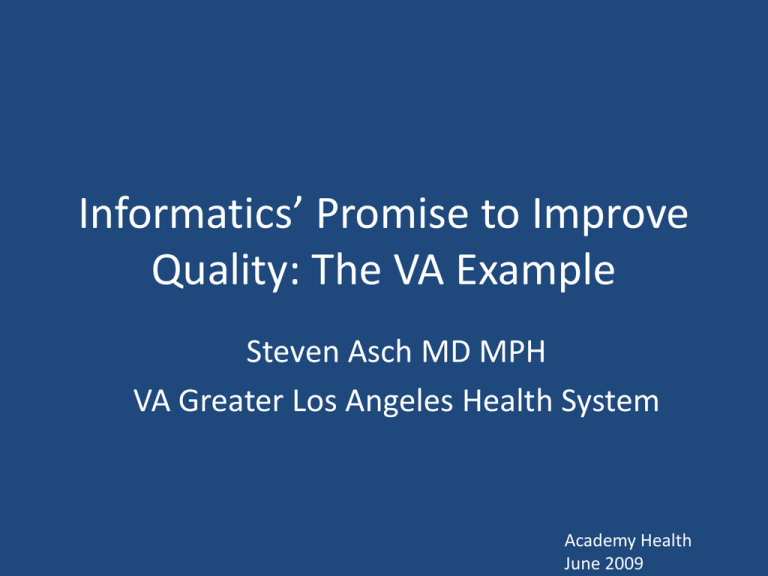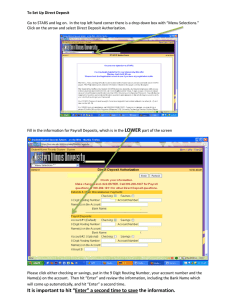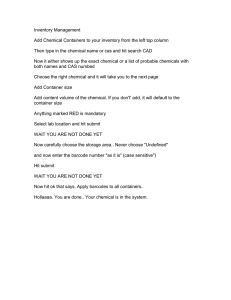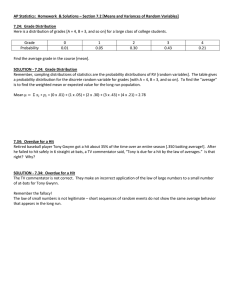Informatics’ Promise to Improve Quality: The VA Example Steven Asch MD MPH
advertisement

Informatics’ Promise to Improve Quality: The VA Example Steven Asch MD MPH VA Greater Los Angeles Health System Academy Health June 2009 “We will restore science to its rightful place and wield [information] technology's wonders to raise health care's quality...” (APPLAUSE) -President Obama’s Inaugural Speech NY Times, Jan 2009 Overview Defining Health Information Technology (HIT) • Evidence from the literature • The VA experience • Lessons learned What Is HIT? – Wide range of functions─e.g., • Adminstration: Billing, registration, supply • Communication: Email and telehealth – We focus on clinical HIT functions that might directly affect quality of care – e.g., • Electronic medical records • Computerized order for medications (CPOE) • Decision-support systems Overview • Defining Health Information Technology (HIT) Evidence from the literature • The VA experience • Lessons learned RAND Study Found ¼ of the 183 Good Studies Come from 4 HIT Leaders Intermountain Health HIT Interactive Database http://healthit.ahrq.gov/tools/rand HIT Systems Have Improved Aspects of Quality at Leaders’ Institutions Example: Partners •Computerized physician order entry and decision systems – 24% reduction in redundant lab tests – 86% reduction in serious medication errors – 21% increase in ordering the appropriate test – 38% decrease in time until treatment was ordered HIT Systems Have Improved Aspects of Quality at Leaders’ Institutions Example: Regenstrief •Added computerized reminders to an existing electronic health record system – 10%-20% increase in screening and prevention activities by general internists – 10%-20% increase in the rates of advanced care directives and advanced care plans – Computer-based standing orders were even more effective than reminders at improving vaccination Organizational Context • “Context and confounders lie at the very heart of the diffusion, dissemination, and implementation of complex innovations. They are not extraneous to the object of study; they are an integral part of it.” Trish Greenhalgh Milbank Quarterly,2004.82(4)581-629. Technology Is Only One Part of a Successful HIT System • What technology is being tested? Technology • What technology is already in place? • How does the new technology fit in the existing system? Human Factors Are also Important Technology Human factors • Is the HIT system usable? • How well is it supported? Human factors study of reminders • Barriers • Coordination between nurses and providers • Satisfying reminders while not with the patient • Workload • Inflexibility • Poor usability •Facilitators •Limit the number of reminders •Position computer workstations strategically •Improve integration of reminders into clinical workflow •Feedback mechanism Saleem JJ, Patterson E S, Militello L, Render ML, Orshansky G, and Asch SA. J Am Med Inform Assoc. 2005;12(4):438-47. Effective Management Is Necessary for Success Technology • How must management change to make HIT successful? Management Human factors Organization and Culture Must Be Supportive • How can HIT become part of an organization’s culture? Organization and culture Technology Management Human factors Overview • Defining Health Information Technology (HIT) • Evidence from the literature The VA experience • Lessons learned The Veterans Affairs Health Care System • Cares for more than 5 million veterans – ~150 hospitals – >1000 clinics • Doctors are salaried • VA both pays for and provides care • Clinical transformation in early 1990’s VA Implemented HIT and Other Systemic Reforms Contemporaneously • Tracking performance in key areas • Accountability for providers and managers • Researcher-administrator partnership • HIT innovations A Brief History of Major VA HIT Innovations • 1982- Official deployment of small components in – Lab, pharmacy, scheduling • 1992- VistA Imaging • 1994- Order Entry / Results Reporting • 1996- CPRS GUI and Clinical Reminders • 2000-Bar Coded Medication Administration • 2004-My HealtheVet ( PHR) in 2004 • 2006- Bi-directional Health Information Exchange 29 June 2009 19 Example: Improving HIV Testing Rates • HIT decision support: Clinical reminder to test at-risk patients • Organizational changes – Standardized VHA HIV informed consent – Streamlined, scripted counseling & nurse-based counseling – Telephonic notification of negative test results – Assured HIV clinic f/u for new HIV+ pts • Provider activation : Academic detailing & social marketing • Audit-feedback: Clinic level reports of HIV testing rates • Clinical Reminder VISN 22: Pre- vs Post Incident HIV Testing Rate Program implementation increases HIV testing rates two – three fold at all sites Reminder Resolution (%) 80% HIV testing 70% HIV evaluation without testing 60% 50% 40% 30% 20% 10% 0% -1 1 2 -1 1 2 -1 1 -1 1 2 -1 1 Intervention Year Site A Site B Site C Control Site D Site E Example of the Heparinizer: Decision Support Tool Spins Off Orders and Progress Note Heparin Errors and Decision Support 16 Number of Errors 14 12 10 8 6 4 2 0 FY2001 FY2002 FY2003 Fiscal Year FY2004 FY2005 29 June 2009 25 My HealtheVet Wellness Reminders 1. 2. 3. 4. 5. 6. 7. 8. 9. 10. 11. 12. Hypertension Influenza Vaccine Pneumococcal Vaccine Colorectal Cancer Screening Lipid Measurement LDL Control Body Mass Index (BMI)>25.0 Diabetes Foot Exam Diabetes Hemoglobin A1C Diabetes Retinal Exam Mammography Screening Cervical Cancer Screen • Empower patients • Improve access to information • Promote patient and health care team collaboration • Improve health outcomes Did it Work? VA Compared to Medicare VA, % 2000 Medicare, % 2000-2001 Mammography 90 77 Pneumococcal Vaccination 81 64 Annual A1c 94 70 Timely aspirin after myocardial infarction 93 84 Aspirin at discharge 98 84 Beta-blocker at discharge 95 78 ACE inhibitor for EF<40% 93 66 Jha et al. NEJM 2003 Did it Work? VA Compared to Community 80% 70% 60% 50% 40% 30% 20% 10% 0% 73 53 56 58 64 44 VA Community Acute Care Chronic Care Asch et al. Annals of Internal Medicine, 2004 Preventive Care Overview • Defining Health Information Technology (HIT) • Evidence from the literature • The VA experience Lessons learned HIT & the VA: Lessons Learned • Literature that some HIT functionalities in leadership organizations associated with improved quality • HIT helped transform VA, but it is inextricably intertwined with other transformative elements: − Culture that values quality − Culture of scientific evidence − Accountability and performance measurement − Health services clinician researchers who were active HIT developers − Incentives are aligned: the VA pays for HIT and benefits from cost savings • From EMR inception to now has been 25 years




